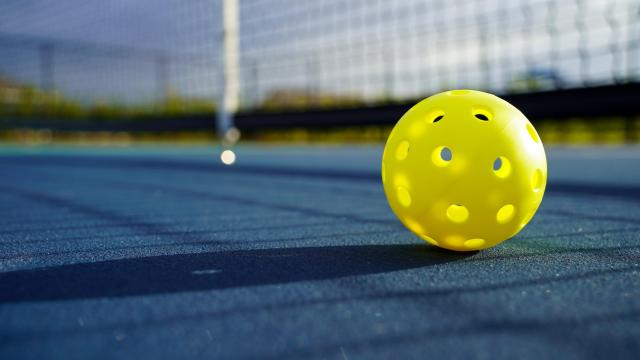Everyone is into pickleball these days, and you’ve probably noticed. What started as a sport for your grandparents has quickly become one of the most popular ones across the country. According to the Sports & Fitness Industry Association, the number of people playing pickleball grew by 159% over three years to 8.9 million in 2022. But there’s another newly-popular, tennis-adjacent sport as well: padel.
What is padel?
Padel, often referred to as “the sport of a thousand rallies,” is a fast-paced racquet sport that combines elements of tennis and squash. Originating from Mexico in the 1960s, padel is now the fastest growing sport in the world, with at least 25 million players in 110 countries worldwide, with 40,000 padel courts globally as of 2022.
There’s a reason why padel is so popular, says fitness expert Andrew White, owner of Garage Gym Pro and padel player, mainly that it offers a multitude of benefits for individuals of all ages and fitness levels, providing a full-body workout, engaging various muscle groups and improving cardiovascular health.
The fast-paced nature of padel also “enhances agility, reflexes, and hand-eye coordination while promoting social interaction and a sense of community,” White says. “Additionally, padel serves as a mental escape, reducing stress and fostering a positive mindset. Its inclusive nature makes it accessible to beginners.”
How are padel and pickleball different?
According to White, padel is typically played on an enclosed court, similar to a glass-walled tennis court, but on a smaller scale. Similar to squash, “the walls come into play, adding an extra dimension to the game and allowing for strategic and dynamic shot selection,” he explains. Additionally, padel is played with solid racquets and a depressurized tennis ball, hile pickleball is played on a smaller court, often outdoors, with perforated plastic balls and specialised paddles.
How to play padel
Both padel and pickleball are similar to tennis, and both are played in doubles. Padel emphasises longer rallies due to the use of walls, requiring players to anticipate and make strategic shots. In pickleball, rallies tend to be shorter.
Similar to pickleball, the serve in padel is underhand, but the ball must hit the ground before hitting the wall to be in, like in squash. “Otherwise, hitting the ball after a wall bounce is allowed,” Tim Quijano, Founder of Padel FYI, explains to Lifehacker. “Experienced players use the walls to help them defend their opponents’ smashes, play off the back wall when they are under pressure and there is no other available option, or surprise their opponents with ‘boasts’ off the side wall.”
Pickleball is more like playing ping pong, but as if you were standing on the table. When serving the ball, you must be at the baseline and hold the paddle and the ball below your waist, and serve underhand and diagonally cross-court.
At the intermediate level, “pickleball becomes a ‘dink’ game, where players stand just outside of the no-volley zone, ‘the kitchen,’ and wait for their opponent to pop the ball up high enough so they can smash it,” Quijano explains. “Whereas in padel, the bigger court and presence of the walls make successful smashes harder. Smash recipients can wait for the bounce off the wall. So the players rely on deep lobs and soft overheads, ‘bandejas,’ Spanish for tray, because the player holds the racket like a waiter holds a tray of food, to build long rallies and maintain control of the net.”
Padel follows the traditional tennis scoring system, but always best of three sets, often played with “Golden point” where 40-40 games are decided by one point. Pickleball uses a unique scoring system where points can only be won by the serving team.
Both padel and pickleball are great team games
Padel is known for its social aspect, says White, as it is commonly played in doubles format. “The enclosed court fosters a sense of camaraderie and promotes constant communication and teamwork among players,” he says. “The longer rallies in Padel create an exciting and engaging atmosphere, making it a fantastic social sport. Pickleball, while also played in doubles, tends to have shorter rallies, focusing more on quick reflexes and precision.”
Is padel easier than pickleball?
Padel has been gaining popularity worldwide, most likely due to its accessibility for players of all ages and skill levels. “The enclosed court and solid walls offer a forgiving playing environment, making it easier for beginners to get involved,” White says. “The smaller court size also allows for more rallies, giving players ample opportunities to develop their skills and enjoy the game. Pickleball, while also beginner-friendly, may have a steeper learning curve due to its different court dimensions and specific paddles.”
However pickleball courts are typically found in local recreational and community centres, while padel requires its own special courts, which are nearly double in size and have artificial turf surfacing. By the way, according to Quijano, the walls are a result of the inventor of padel playing tennis in his courtyard off the walls of his house.

Leave a Reply
You must be logged in to post a comment.